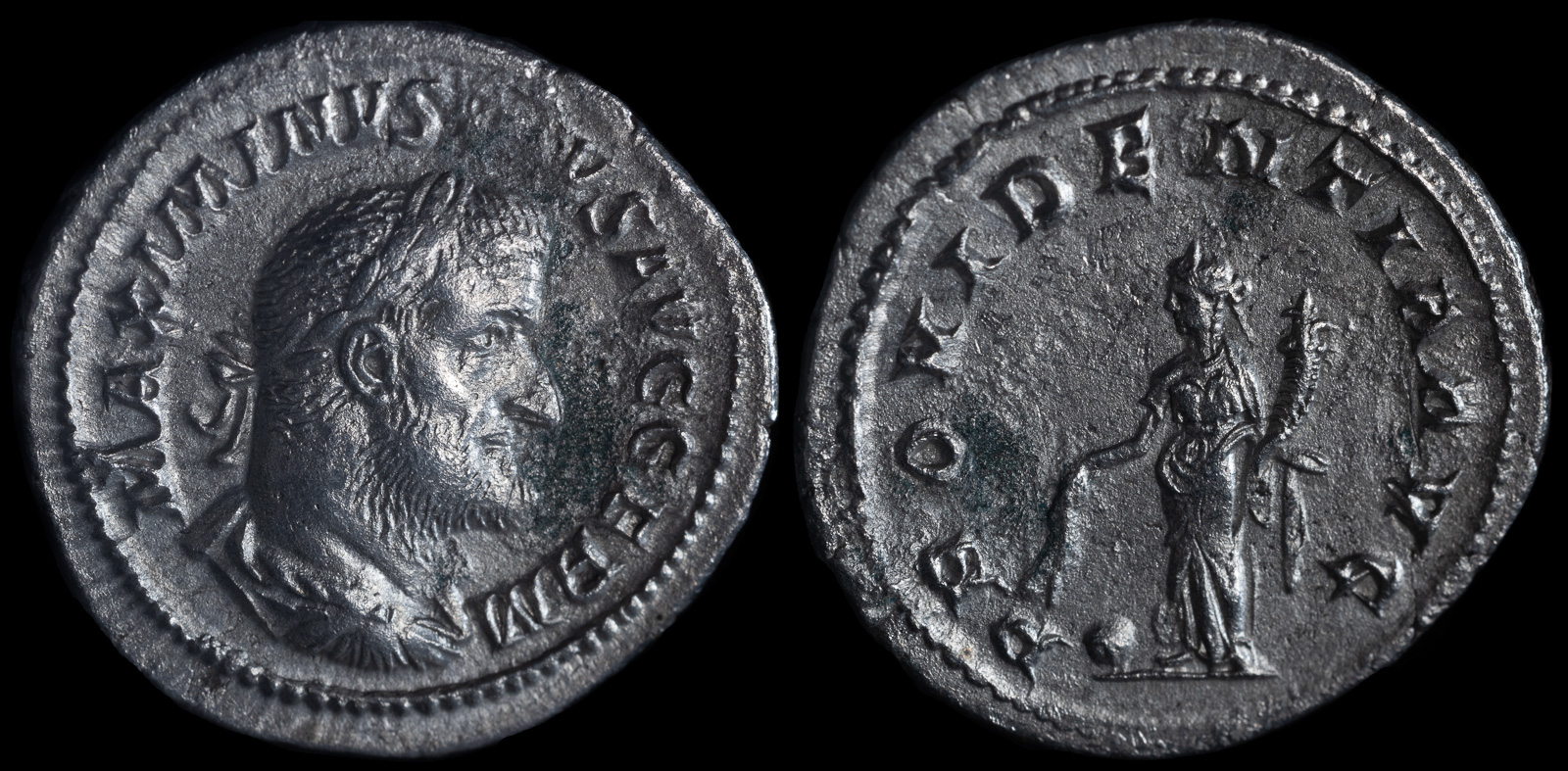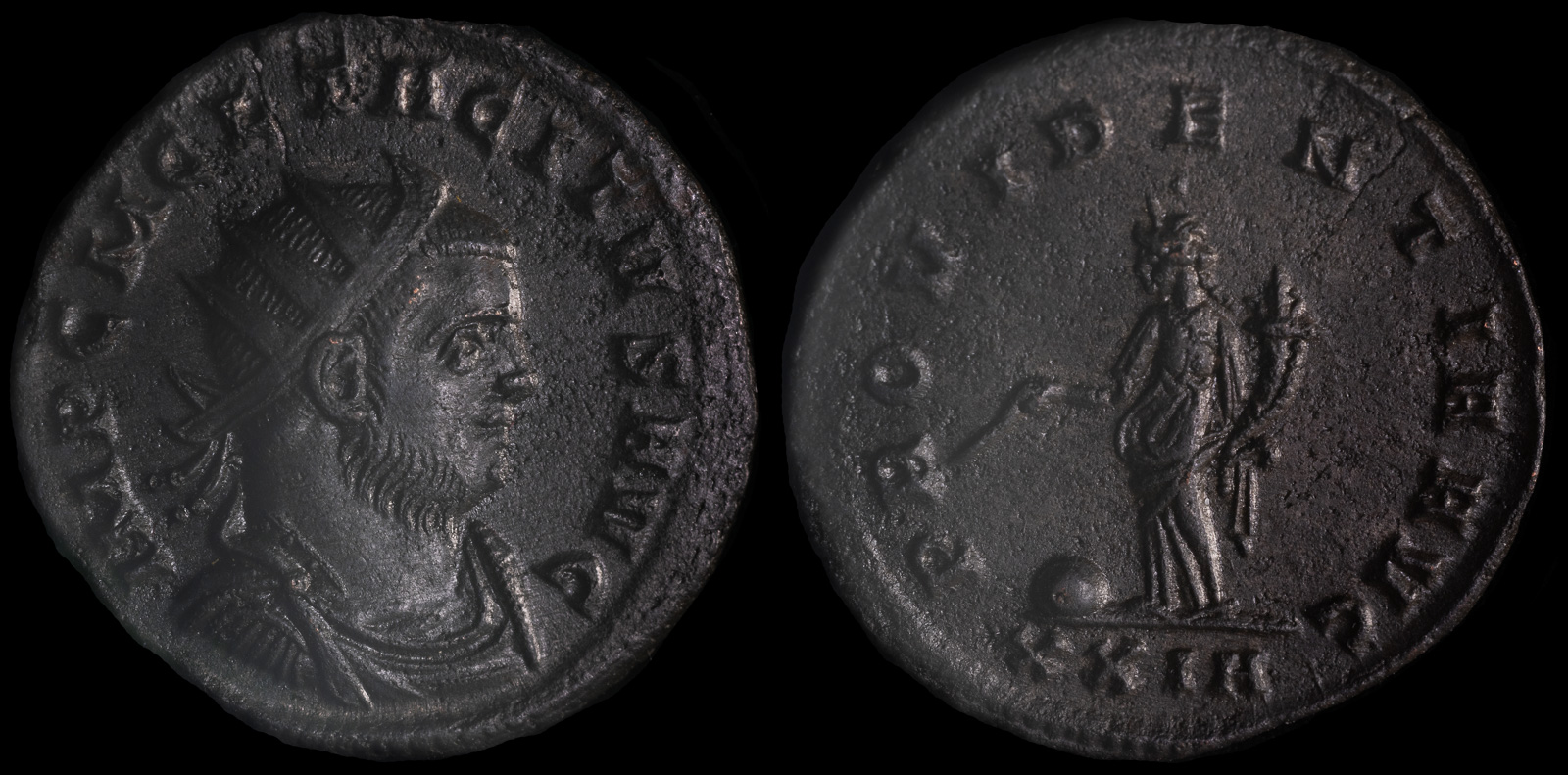Wand
View All Tags
The staff was also commonly associated with other gods and goddesses who represented authority and power. For example, Zeus, the king of the gods, was often shown holding a scepter or a wand, symbolizing his dominion over both gods and men. On certain coins, especially those produced during the Hellenistic period, Zeus is shown seated on a throne with a scepter in hand, reflecting his supreme status in the Greek pantheon. This symbol of power would be conveyed through coinage as a way of solidifying the ruler’s authority.
In addition to gods, the depiction of wands and staffs was used to emphasize the roles of mythical or heroic figures. For instance, the hero Herakles is sometimes shown holding a club or staff, reinforcing his strength and his association with heroic deeds. Similarly, Asclepius, the god of healing, is depicted holding a staff with a single serpent coiled around it, which became an enduring symbol of medicine.

Maximinus I Thrax
Rome 235-238 CE
AR Denarius 19mm, 2,80g
Obv: IMP MAXIMINVS PIVS AVG. Laureate, draped and cuirassed bust right.
Rev: PROVIDENTIA AVG. Providentia standing left, holding cornucopia and wand over globus to left.
RIC 13

Tacitus
Rome, 275 CE
BI Antoninianus 3.63g, 21mm, 12h
IMP C M CL TACITVS AVG, radiate, draped and cuirassed bust to right /
PROVIDENTIA AVG, Providentia standing facing, head to left, holding cornucopiae and wand over globe; XXIA in exergue.
RIC V.1 92; MER-RIC 3474 (temp.)